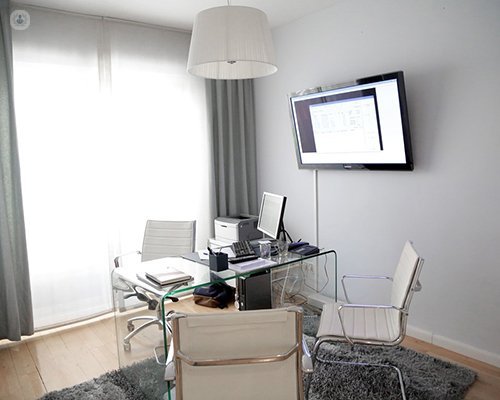All you need to know about a pulmonary nodule
Written by:It is known as the pulmonary nodule less than 3 cm, more or less rounded image (if it is greater is called mass), detected by radiology. In the past the pulmonary nodule was detected by a chest radiograph, while currently also detected by scanner (CT).

The pulmonary nodule may be alone or may be more than one. In the scanner we can visualize nodules 2-3 mm and chest X-ray from 10 mm, depending on the location although may go unnoticed, except calcium nodules even detect subcentimeter.
How often practiced chest CT scan makes lung nodules are very frequent findings, which alarmed and motivate medical consultation. Also on the scanner abdomen, those nodules located in the lower area of the lungs are detected.
For the specialist in Pneumology can assess lung nodule it is important:
- Morphology: round, polygonal, smooth contour, contour or contour blurring espiculado.
- Density, solid, in "frosted glass", calcification, fat, homogeneity ...
- The location and whether it is unique or are multiple
- The patient 's medical history as if smoked or have had cancer.
- The size of the nodule initiation and subsequent evolution
Causes of pulmonary nodule
The benign lung nodule is the most common type of lung nodule. It is mainly secondary scars, mucus plugs inside the bronchus and infections. The prevalence of pulmonary nodules in asymptomatic smokers subjects is up to 66%, with most of them benign to 99%.
If we talk of malignant pulmonary nodule, another large group of neoplastic causes are due to cancer, lung either source or origin in another organ and has spread to the lung.
Pulmonary nodule: Symptoms
The pulmonary nodule is generally asymptomatic because they are usually an incidental finding. However, an infectious cause pulmonary nodule can cause symptoms such as pain or fever.
Treatment for pulmonary nodule
Depending on your medical history, such as smoking or pre - neoplastic disease, and the characteristics of the pulmonary nodule, the wisest will make scanner control passed a period of three to six months to see if the lung nodule grows, if it is stable or if it disappears.
When lung nodule grows or does not go away you can perform the following actions:
- From 7-10 mm can be practiced Pet-Tac if the suspicion is relatively high, although there false positives and false negatives.
- If a central node, you can do a bronchoscopy.
- If you suspect a malignant peripheral pulmonary nodule with a size that allows it can perform a needle biopsy guided by scanner.
Treatment varies depending on the type of pulmonary nodule:
- If it is benign scars, do not do anything.
- If inflammatory / infectious benign, it can be treated with antibiotics.
- If it is malignant or highly suspicious for malignancy and is not spread to lymph nodes or other parts, it should be operated.
- If it is doubtful as nodules denominated "ground glass" which can be benign or malignant by evolution to do controls closely for possible malignancy.


